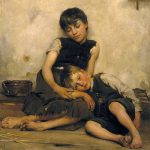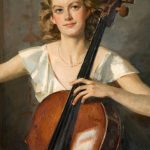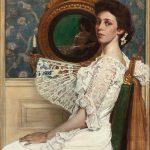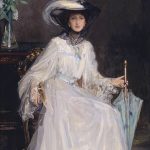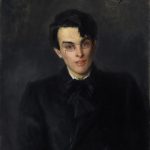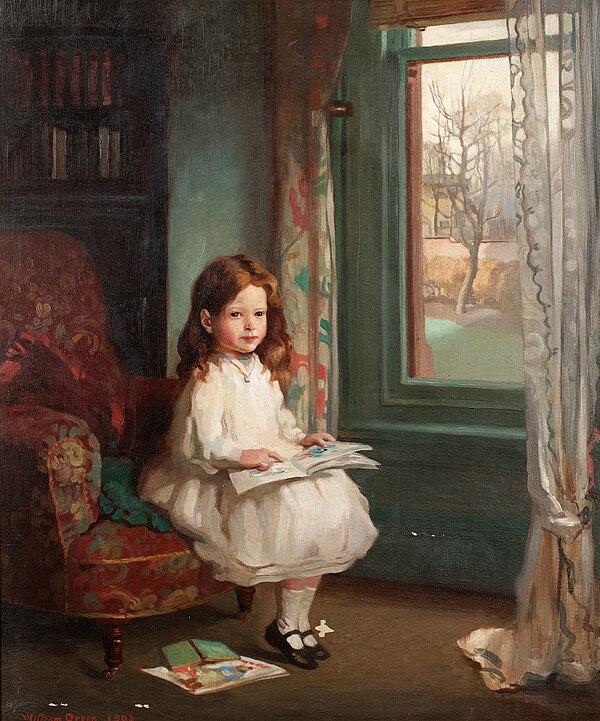
Sir William Newenham Montague Orpen, a prolific Irish painter and portraitist, left an indelible mark on the art world during the late 19th and early 20th centuries. Born on November 27, 1878, in Stillorgan, County Dublin, Ireland, Orpen’s artistic journey unfolded against the backdrop of a changing Ireland and a world grappling with the complexities of the modern age. His exceptional talent, versatility, and contributions to portraiture and social commentary established him as a leading figure in the art scene of his time.
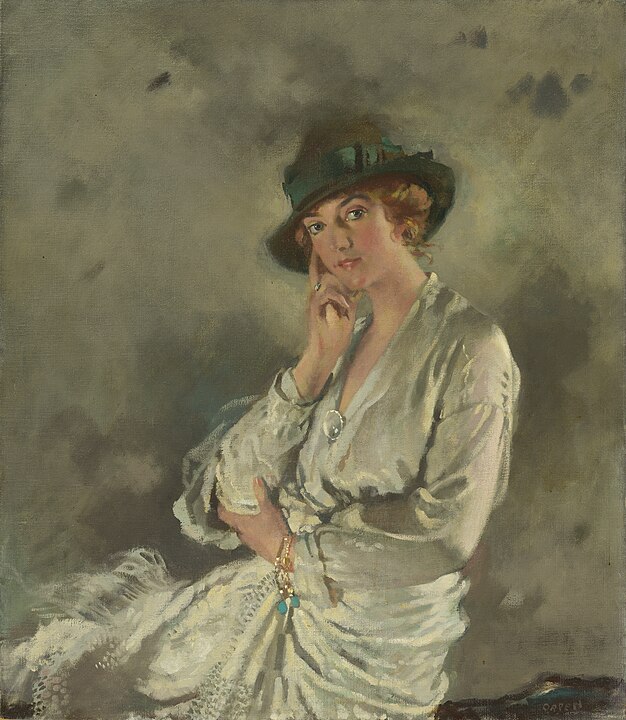
Orpen’s early interest in art led him to enroll at the Dublin Metropolitan School of Art at the age of thirteen. His innate artistic abilities quickly became evident, and his dedication to his craft paved the way for further studies at the Slade School of Fine Art in London. Under the guidance of influential instructors such as Henry Tonks, Orpen honed his technical skills and developed a keen eye for observation, laying the foundation for his future artistic pursuits.
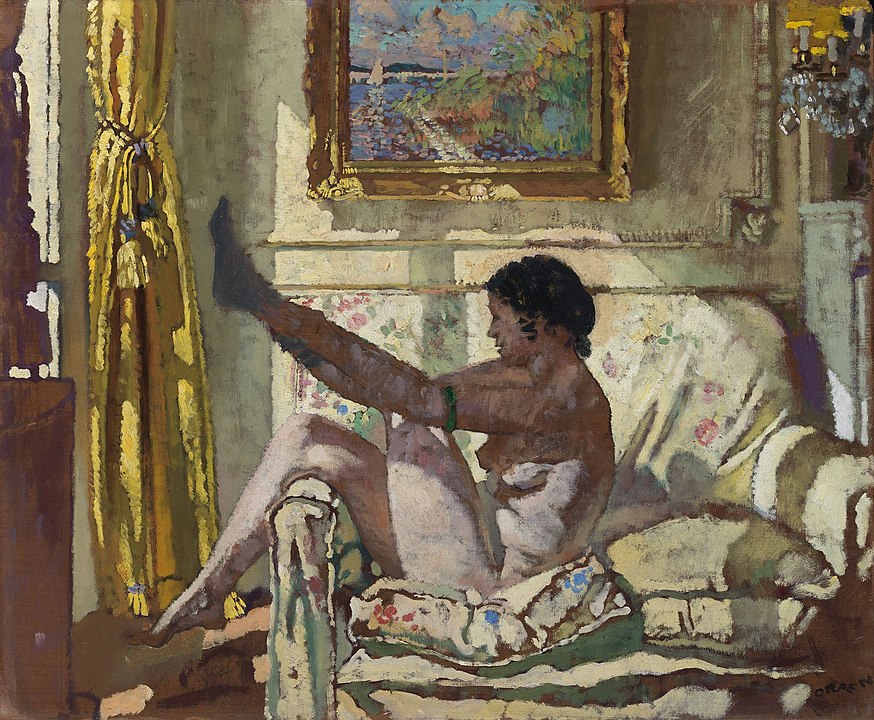
The turn of the 20th century marked a period of growth and recognition for Orpen. His early works, characterized by a blend of academic precision and a burgeoning modern sensibility, caught the attention of art critics and patrons. Orpen’s paintings displayed a range of influences, from the academic traditions of the past to the emerging currents of modernism.
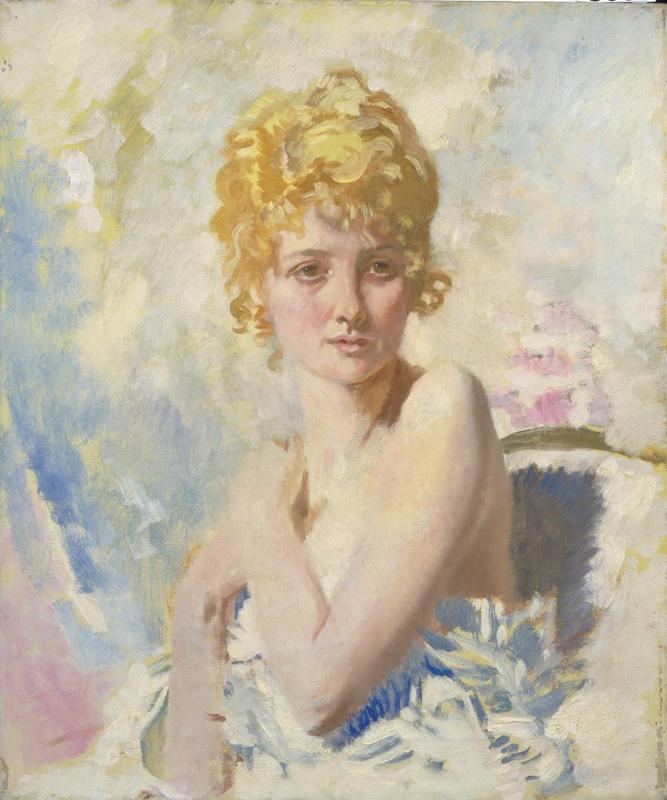
Orpen’s versatility as an artist was evident in his exploration of different genres. While he excelled in portraiture, he also delved into narrative scenes and landscapes. His ability to capture the essence of his subjects, whether in intimate portraits or expansive landscapes, contributed to the breadth of his artistic oeuvre.
Big, Big Prize
In 1900, Orpen’s career received a significant boost when he won the Slade Composition Prize. This recognition marked a turning point, providing him with the confidence to pursue a career as a professional artist. The subsequent years saw Orpen’s rise in the London art scene, with his works being featured in major exhibitions and attracting the attention of both art critics and collectors.
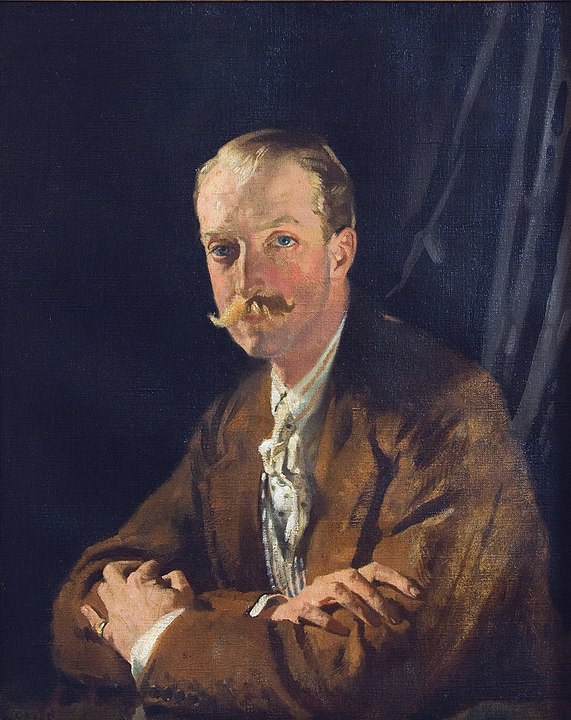
Orpen’s portraiture skills set him apart, and he became sought after for his ability to capture the personalities of his sitters. His portraits exhibited a psychological depth, revealing the inner lives and nuances of his subjects. Among his notable early portraits is “The Play Scene from Hamlet” (1903), which showcased Orpen’s innovative approach to portraiture by incorporating theatrical elements and narrative complexity.
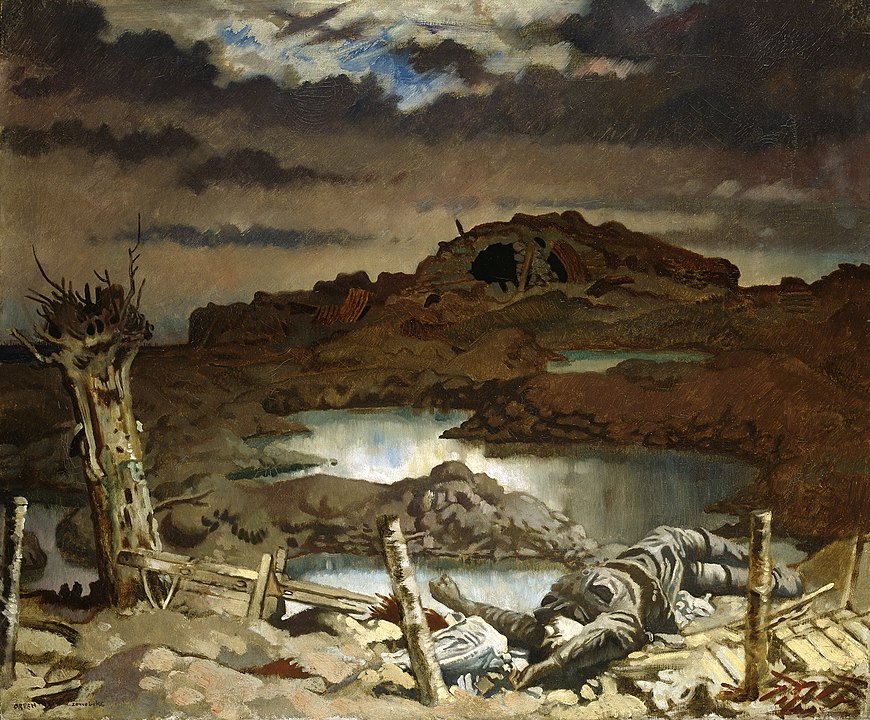
In 1901, Orpen married Grace Knewstub, and the couple would have three daughters. Grace became a recurring subject in Orpen’s art, and her presence is felt in several of his paintings, adding a personal dimension to his body of work. The domestic scenes featuring Grace and their children reflected a sense of familial warmth and intimacy.
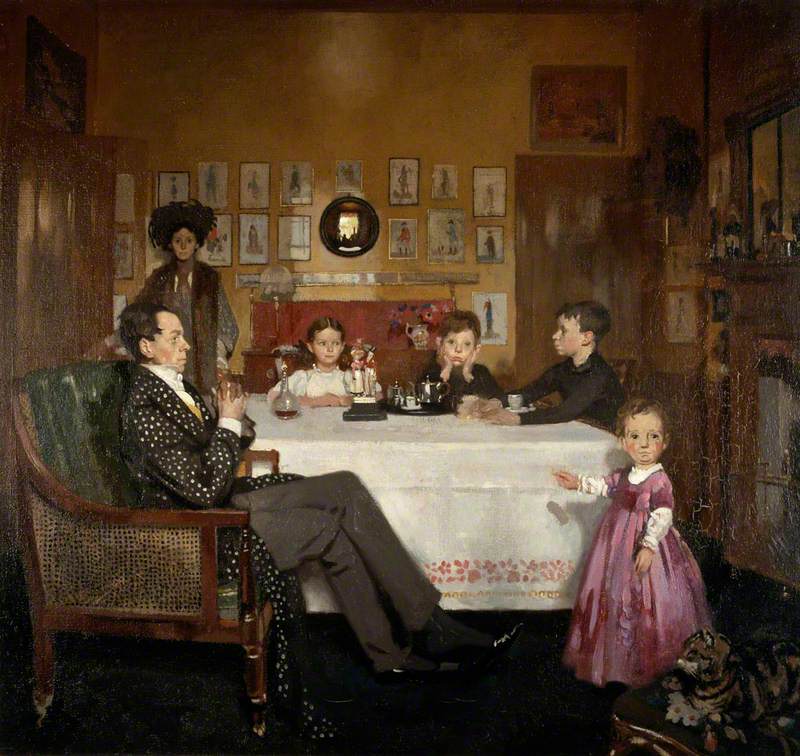
Orpen’s career continued to ascend, and he gained membership in prestigious artistic societies, including the Royal Society of Portrait Painters and the Royal Hibernian Academy. His success as a portraitist led to commissions from prominent figures of the time, including politicians, writers, and members of the British aristocracy.
The outbreak of World War I had a profound impact on Orpen, both personally and artistically. In 1917, he was appointed as an official war artist, and his experiences on the front lines influenced his subsequent works. Orpen’s wartime paintings provided a stark and poignant commentary on the human cost of conflict, capturing the devastation and the psychological toll on soldiers.
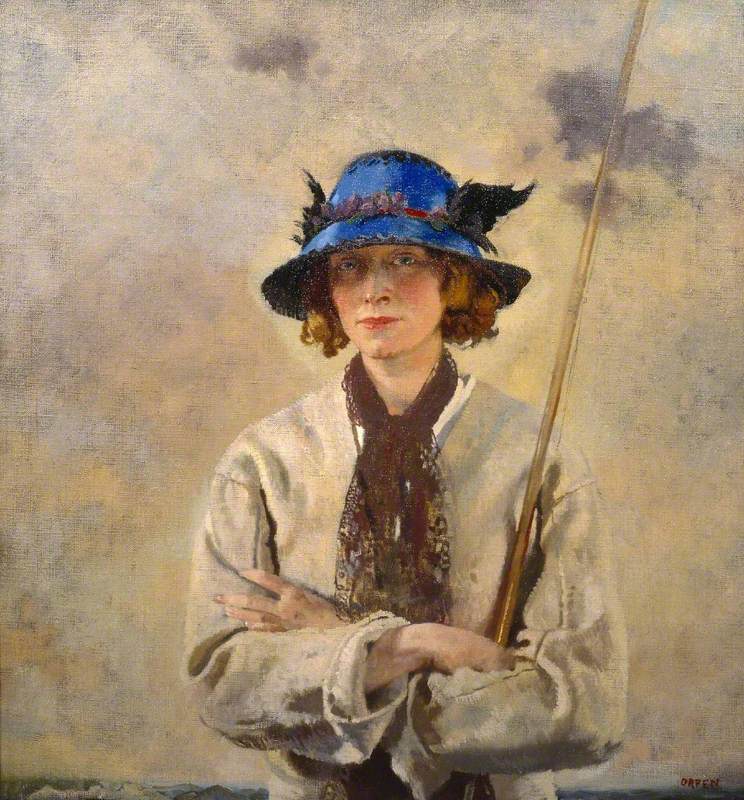
One of Orpen’s most famous war paintings is “The Signing of Peace in the Hall of Mirrors, Versailles” (1919), depicting the signing of the Treaty of Versailles. The painting is a monumental composition featuring key political figures, including Woodrow Wilson and Georges Clemenceau. Orpen’s meticulous attention to detail and his ability to convey the gravity of the historical moment made this painting a significant contribution to the visual documentation of World War I.
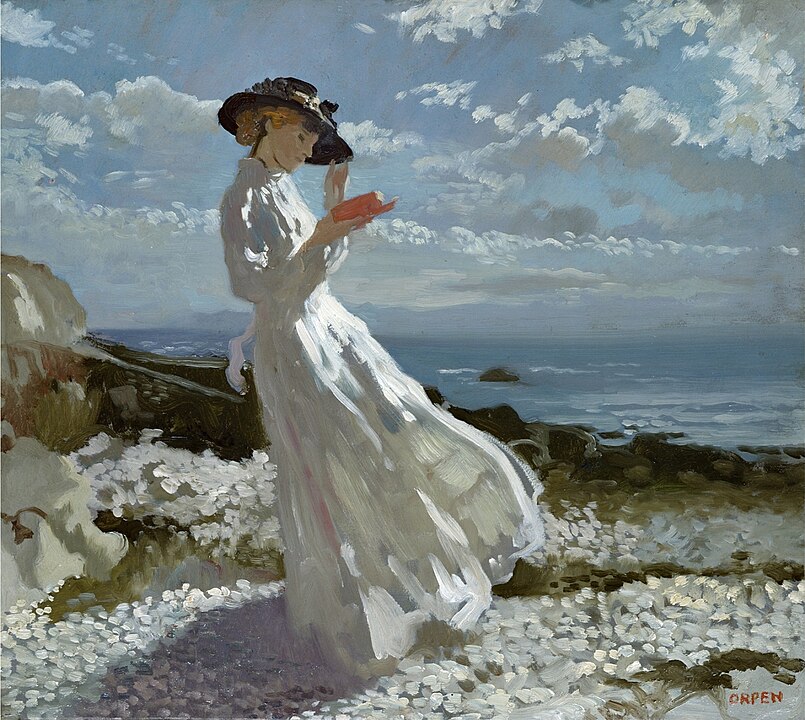
Orpen’s post-war career saw him continue to engage with portraiture and social commentary. He was appointed as the official portraitist for the Paris Peace Conference, and his portraits of diplomats and leaders further solidified his reputation as a preeminent portrait painter. Simultaneously, Orpen’s interest in social issues found expression in paintings like “To the Unknown British Soldier in France” (1921), which depicted the solemnity and reflection surrounding the burial of an unidentified soldier.
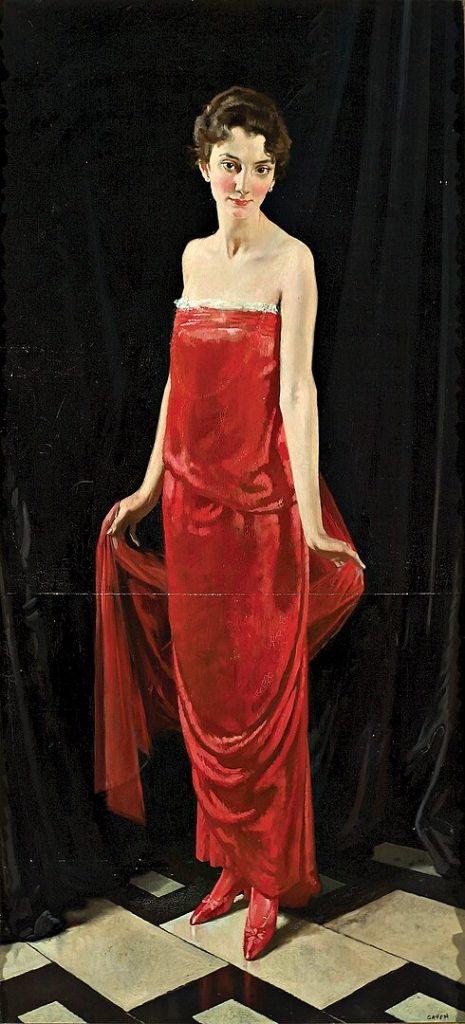
Despite his professional success, Orpen faced personal challenges, including strained relationships and financial difficulties. His marriage to Grace Knewstub encountered difficulties, leading to a period of separation. Orpen’s personal struggles found expression in his art, with self-portraits and introspective works revealing a sense of inner turmoil.
Sir orpen
In 1920, Orpen was knighted for his contributions to art, adding the title “Sir” to his name. The accolade recognized his significant impact on the art world and his role in documenting a pivotal period in history. Orpen’s artistic legacy extended beyond his canvases to include his writings and illustrations, reflecting his intellectual curiosity and engagement with various forms of artistic expression.
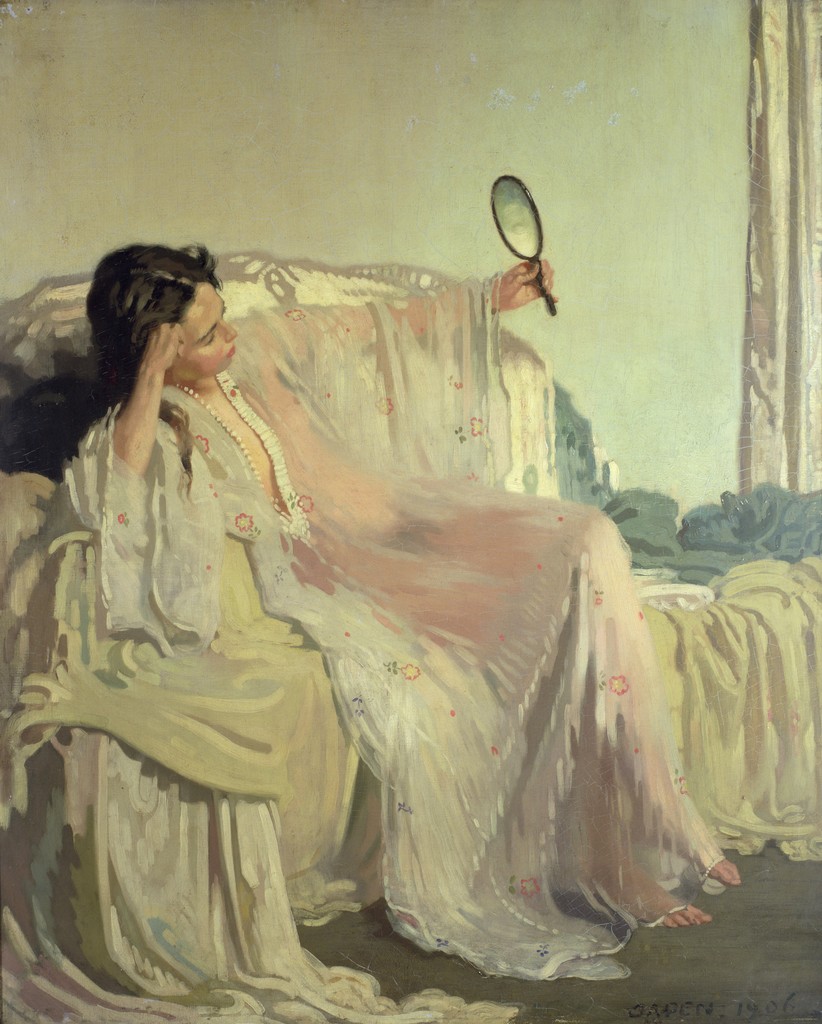
Orpen’s later years were marked by a return to portraiture and a renewed focus on his artistic practice. He continued to exhibit his works and received numerous awards for his contributions to the arts. His paintings, characterized by their technical brilliance and insightful portrayal of human subjects, left an enduring imprint on the British art scene.
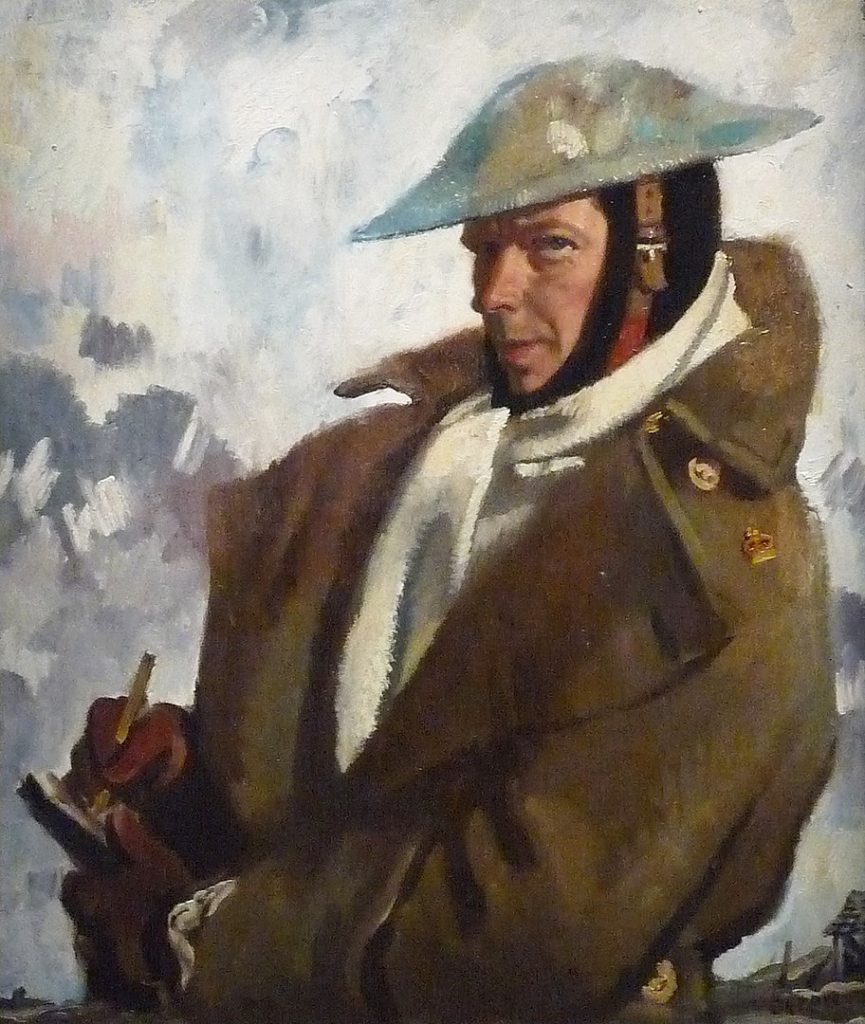
Sir William Orpen passed away on September 29, 1931, at the age of 52. His legacy as a painter, portraitist, and chronicler of his time endures through the continued appreciation of his works. The range of Orpen’s artistic output, from intimate portraits to monumental historical paintings, reflects the complexity and dynamism of an era marked by both cultural upheaval and personal introspection.
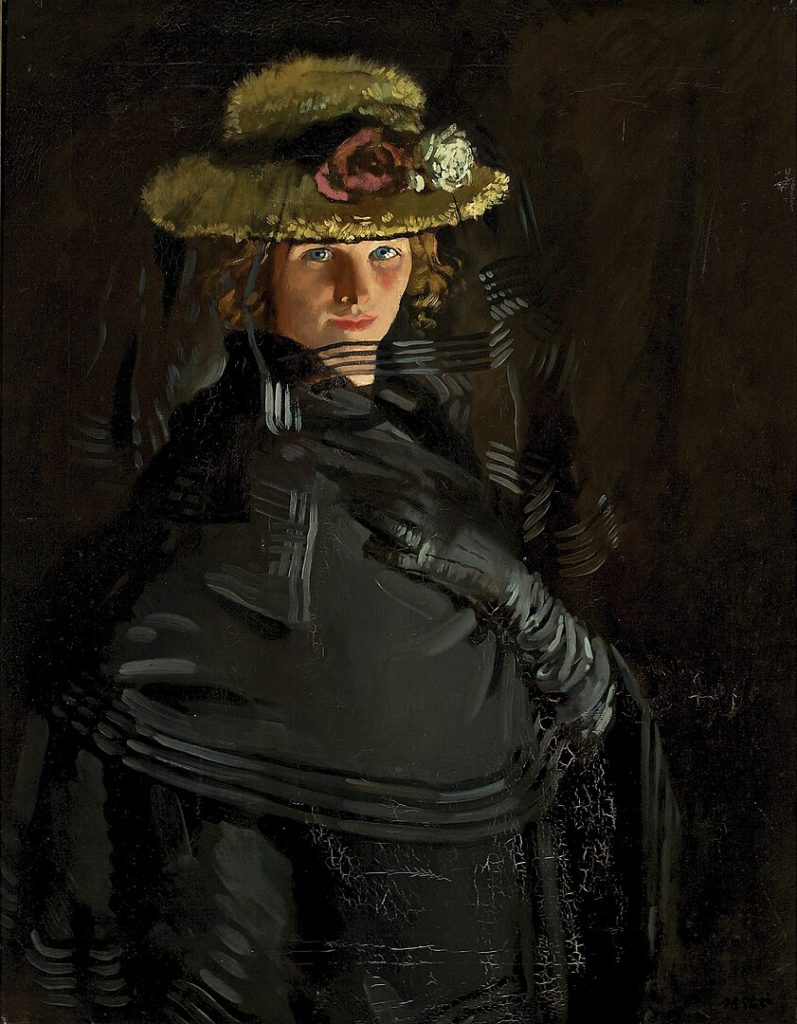
Orpen’s impact on portraiture, his exploration of wartime themes, and his ability to capture the nuances of human experience contribute to his lasting significance in the canon of British art. His legacy as a multifaceted artist, equally adept at capturing the intimate and the monumental, ensures that Sir William Orpen remains a key figure in the rich tapestry of art history.

